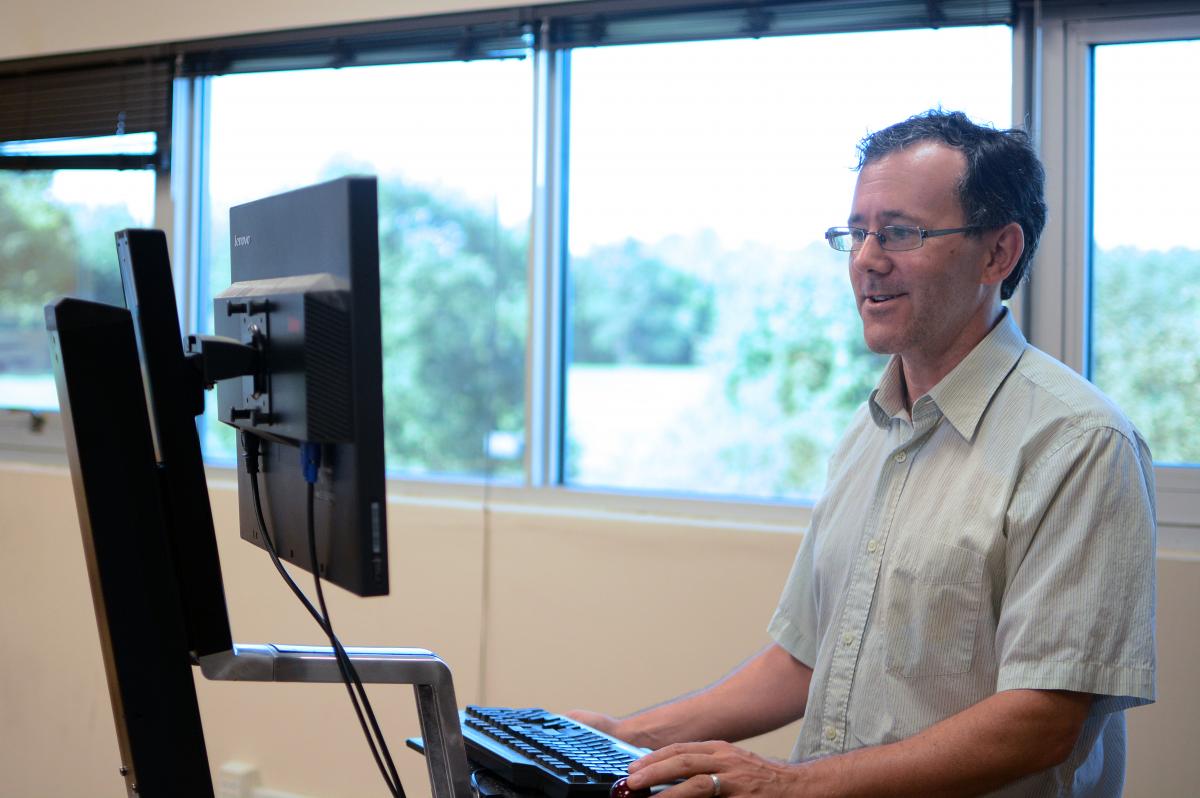Q&A: Ken Mayer, Director of Distance and Distributed Learning Services
December 31, 1969Ken Mayer has devoted much of his professional life to designing curricula and course content, and in developing ways to deliver them to students. He learned database programming while still in high school, and maintained an interest in computer science while majoring in Greek and Latin during college. He was involved with an internet startup, delivering courses to high schools, prior to joining Capitol Technology University. In addition to supervising the university’s online education platforms, he is a member of the adjunct faculty, teaching mythology and other humanities courses.
 Capitol embraced online education early on and continues to show a strong commitment to this mode of delivery, especially at the graduate level. Why?
Capitol embraced online education early on and continues to show a strong commitment to this mode of delivery, especially at the graduate level. Why?
The interaction between our professors, who are working professionals, and our students, who also are often professionals in their fields, is a key component of our success as an institution. That’s why Capitol was an early adopter of online technology. Because we’ve wanted to have professors who are working, they needed to be able to teach in the evenings. Our students, too, are often only available in the evenings. Online was a natural outflow of that. We’re still very much about professionals teaching professionals, and it makes sense – in this fast-paced world – to do more things online.
What is the guiding philosophy beyond Capitol’s approach?
The key terms would be “live” and “interactive.” That was something that was missing in my previous job, where we were sending out course materials without getting any data back. These were primarily asynchronous, work-at-your-own-pace materials, and we had no metrics available on how students responded to the materials.
When I came to Capitol and looked at examples of the classes being offered, it was great to see that students were engaged and interested in responding in real time, and that the professors were responding to them. I see that as something unique about the Capitol experience, in comparison to a lot of other online programs.
Do you see a role for asynchronous delivery? Are there situations where asynchronous would be appropriate?
Sure. In fact, a lot of our courses are blends of live and asynchronous.
What do you see as some of the stand-out capabilities of our distance learning platform?
What really stands out is how the professors use it. When we have, for instance, faculty members teaching cybersecurity, they will use the capabilities of our live platform in order to have students share their screens and work together on programming, live. They might collaborate in a diagnosis of malware in a virtual computer, with one student logging in to the virtual machine and sharing the screen to the class so that everyone can work in real time on diagnosing the problem. Meanwhile, the professor will be there, commenting and showing the students where they are on target or going off track. The professor can also take over control, if needed. So it’s hands-on in a way that’s actually not even possible in a traditional classroom.
How did you become involved in distance learning?
I started out as a database programmer in high school, then went to college and studied Greek and Latin – while still keeping up with computer science. In the early 2000s I was involved with an internet startup, delivering courses to high schools, and after that I came to Capitol. I’ve done a lot of work in designing tests and curricula, and in developing ways to deliver them to students.
Where do you see distance learning going in the future? What’s on your wish list?
I’d like to see more in the way of interactive quizzes and other assignments that can be incorporated within the live classroom. There are vendors with products that would enable us to conduct quizzes in Adobe Connect and then bring them back in and grade them – and this feature would even be accessible to students who listen to the recordings of the class session, as opposed to being there in real time.
Currently, our class recordings are useful supplements – allowing for review or reinforcement – but they don’t always work well as stand-alone materials. That is, you wouldn’t offer the recorded sessions on their own, without the context of the live class. I’d like to see us give more attention to developing recorded material that would work asynchronously as well as live. The software needed is not expensive; the challenge is producing the content.


